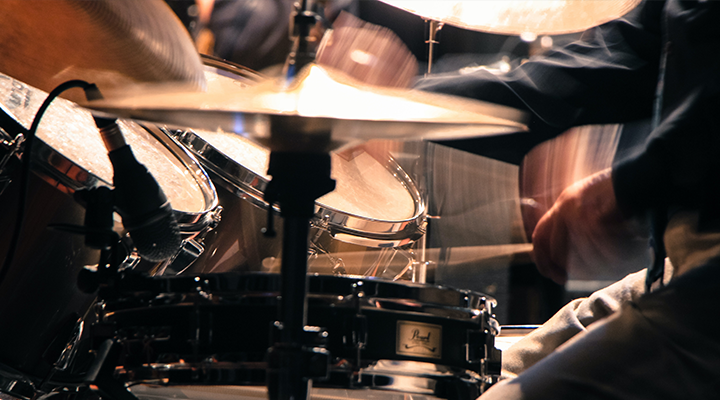Studying drum theory and notation is not as hard as some make it out to be. We’ll make sure it’s not boring and learn them in interesting and easy to understand ways. We’ll look at exercises, drum beats and fills, that you can use to practice your reading skills and the ability to play different note values. I’ll also show you how you can apply these grooves and fills practically to songs.
We’ll first look at some variations on a drum groove known as ‘the beat’ or ‘the money beat’. It’s been used in countless songs and made a lot of money for many people. One of the most recognisable uses of the beat is in Micheal Jacksons hit single Billie Jean.
Billie Jean (1983) – Micheal Jackson (Drums by Ndugu Chancler)
Knowing how to read and write music is a very valuable asset. It enables you to take advantage of the great amount of material that there is out there in book and video format, and use the material I’ll give you in your lessons at home, helping you to reach your full potential. Being able to read and write drum music and notation has also been so beneficial for my own career, as I’ve often had to read drum parts or work out beats and fills that employers have wanted me to specifically play.
I’ve also made a playlist on Spotify with the songs that have used the money beat.
Drum Theory & Notation

You don’t have to read music to be a great drummer or musician. There are many musicians that play and write music with only their ears. But having the ability to read music has many benefits.
It’ll help you to expand your knowledge as you’ll be able to study other books, websites and even get gigs others might not. Having the ability to read will open up so many other doors for you helping you to reach your full potential as a drummer and musician.
Drum music is a little more open compared to other melodic instruments such as violins, guitars or pianos. There are no set ways of writing the drums down, which can lead to some confusion. This is because we can add and take away different drums or cymbals.
At the top of this section, you’ll see a legend of how the Percussive Arts Society (US) have tried to standardise drum music and in general, there will always be a legend or a key at the top of your music or the front of a book.
Note Values & Rests
The language of music can get a little confusing, especially as the Europeans and Americans have different ways in which they call the various notes and all the bits and pieces that make up the music, such as bars or measures.
Let’s take a look at this first sheet that shows us the notes as they’d be written on a piece of music, the European Name, The American Name and its value or how many beats it’s worth.

When you find yourself tapping your foot or drumming the table along to a song, you’re actually playing along to the pulse of a song. In most modern Western music, you’ll find the main pulse of the song is a crotchet or quarter note. Often written in a time signature of 4/4 which means the music moves in loops of 4 and we count our pulses in 1, 2, 3, 4 and repeat until the end of the song.
The crochet or quarter note is the note value from where the other note values in this section derive. Much like quarter notes, 8th notes are extremely important and common in western music. They are played twice as fast as crochets or quarter notes and are used a lot in styles of music such as rock, pop, funk and soul, among many others.
Semiquavers or sixteenth notes are twice as fast as quaver or eighth notes and are very popular amongst rock, funk, heavy metal, and Latin drummers. Demi Semiquavers or thirty-second notes are twice as fast as 16th notes and are heavily used in drum fills and as drum beat embellishments, especially in rock-based styles of music such as pop and funk.


Add Comment